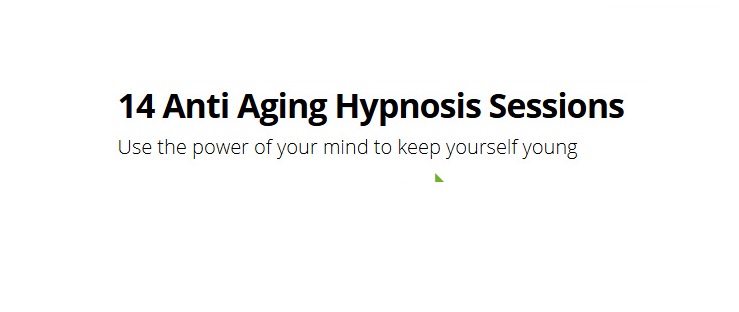Anti-Aging

Aging is inevitable, but how you age is largely within your control. By adopting scientifically backed strategies, you can slow down the effects of aging, boost your energy, and maintain youthful skin and vitality. Whether you’re looking to refine your skincare routine, improve your lifestyle, or explore advanced treatments, this comprehensive guide has everything you need to know.
What is Aging and Why Does it Happen?
Aging involves a gradual decline in physical, mental, and cellular functions over time. While it’s a natural part of life, several internal and external factors determine how quickly and visibly you age.
Key Causes of Aging:
- Free Radical Damage: Free radicals are unstable molecules that damage cells through oxidation, leading to wrinkles and dullness. Pollution, UV radiation, and smoking increase free radical production.
- Loss of Collagen and Elastin: Starting in your 20s, collagen production slows by about 1% annually, causing the skin to lose elasticity.
- Shortened Telomeres: Telomeres, protective caps at the ends of DNA strands, shorten as cells divide, eventually leading to cell death.
- Hormonal Changes: Aging causes shifts in hormones like estrogen and testosterone, which can affect skin thickness, hydration, and muscle mass.
- Environmental Factors: Chronic sun exposure (photoaging), pollution, and stress accelerate aging.
A Holistic Approach to Anti-Aging
To effectively combat aging, focus on addressing it from the inside out. Let’s dive deeper into lifestyle habits, dietary choices, and treatments to slow the aging process.
1. Nourish Your Body With Anti-Aging Foods
What you eat plays a crucial role in how you age. Certain nutrients help reduce inflammation, boost collagen production, and protect cells from oxidative stress.
Anti-Aging Superfoods:
- Avocados: Packed with healthy fats and vitamins C and E to hydrate and repair skin.
- Blueberries: Rich in antioxidants like anthocyanins, which protect cells from free radical damage.
- Fatty Fish: Salmon and mackerel contain omega-3 fatty acids, which reduce inflammation and support brain health.
- Nuts: Almonds and walnuts are high in vitamin E, promoting skin elasticity and cell repair.
- Green Leafy Vegetables: Kale, spinach, and broccoli are loaded with antioxidants, fiber, and essential vitamins.
- Dark Chocolate: Contains flavonoids that improve blood flow to the skin and protect against UV damage.
Key Nutrients to Focus On:
- Vitamin C: Aids in collagen production (found in citrus fruits, bell peppers, and strawberries).
- Vitamin D: Strengthens bones and immune function (sourced from sunlight and fortified foods).
- Zinc and Selenium: Protect against oxidative damage and promote skin healing (found in nuts, seeds, and seafood).

2. Skincare Essentials for a Youthful Glow
Your skincare routine should evolve as you age to address changing needs. A consistent and well-researched routine can delay signs of aging.
Morning Routine:
- Cleanse: Use a gentle, hydrating cleanser to remove dirt and impurities without stripping natural oils.
- Antioxidant Serum: Vitamin C serums protect against environmental damage and brighten the complexion.
- Moisturize: A lightweight moisturizer with hyaluronic acid keeps skin plump and hydrated.
- Sunscreen: Apply a broad-spectrum SPF 30 or higher daily, even on cloudy days, to prevent photoaging.
Evening Routine:
- Double Cleanse: Remove makeup and sunscreen with an oil-based cleanser, followed by a gentle wash.
- Exfoliate: Use chemical exfoliants like AHAs or BHAs twice a week to slough off dead skin cells and boost cell turnover.
- Treatment: Incorporate retinoids to reduce wrinkles, or peptides to repair damaged skin.
- Night Cream: Opt for a richer cream containing ceramides or niacinamide to restore the skin barrier overnight.
3. Exercise: The Fountain of Youth
Regular exercise isn’t just for weight management—it’s a key component of anti-aging. Physical activity helps maintain muscle mass, improve cardiovascular health, and enhance skin quality.
Benefits of Exercise for Anti-Aging:
- Increased Circulation: Improves nutrient delivery to the skin, giving it a healthy glow.
- Reduced Stress: Lowers cortisol levels, which can prevent collagen breakdown.
- Muscle Preservation: Strength training combats age-related muscle loss (sarcopenia).
Types of Anti-Aging Exercises:
- Cardio: Walking, cycling, and swimming boost heart health and endurance.
- Strength Training: Incorporate weights or resistance bands 2–3 times a week.
- Yoga and Pilates: Enhance flexibility, balance, and mindfulness.
- HIIT (High-Intensity Interval Training): Short, intense workouts improve metabolic health and energy levels.
4. The Power of Sleep
Quality sleep is one of the most underrated anti-aging tools. During deep sleep, the body repairs itself, producing growth hormones essential for cell regeneration.
Tips for Better Sleep:
- Stick to a consistent sleep schedule.
- Create a relaxing bedtime routine (e.g., reading, meditation).
- Limit screen time an hour before bed to reduce blue light exposure.
- Ensure your bedroom is dark, cool, and quiet.
- Avoid caffeine and heavy meals close to bedtime.
5. Stress Management and Its Role in Aging
Chronic stress accelerates aging by increasing inflammation and cortisol production. Elevated cortisol levels can lead to skin thinning, wrinkles, and a weakened immune system.
Stress-Relief Practices:
- Mindfulness Meditation: Reduces stress and improves mental clarity.
- Deep Breathing Exercises: Activates the parasympathetic nervous system for relaxation.
- Hobbies: Engage in activities you enjoy to distract from daily worries.
- Gratitude Journaling: Helps shift focus to positive aspects of life.
6. Advanced Anti-Aging Treatments
For those seeking faster or more noticeable results, advanced treatments offer options to rejuvenate skin and improve overall appearance.
Non-Invasive Treatments:
- Chemical Peels: Remove the outer layer of skin, revealing a smoother surface.
- Microdermabrasion: Gently exfoliates to reduce fine lines and discoloration.
- LED Light Therapy: Reduces inflammation and stimulates collagen production.
Invasive Options:
- Botox: Smooths dynamic wrinkles caused by facial expressions.
- Dermal Fillers: Restore volume to areas like cheeks and lips.
- Laser Resurfacing: Treats deep wrinkles, scars, and hyperpigmentation.
- Facelift Surgery: Provides long-term results for sagging skin and deep wrinkles.
7. Supplements and Herbal Remedies
Diet alone may not provide all the nutrients needed for anti-aging. Supplements and herbs can complement your efforts.
Top Anti-Aging Supplements:
- Collagen Peptides: Promote skin elasticity and hydration.
- Resveratrol: Found in red wine, it supports heart health and reduces inflammation.
- CoQ10: Fights oxidative stress and improves energy production.
- Astaxanthin: A potent antioxidant that protects skin from UV damage.
Herbs with Anti-Aging Benefits:
- Ashwagandha: Reduces stress and boosts energy levels.
- Turmeric: Contains curcumin, which fights inflammation.
- Ginseng: Enhances skin elasticity and reduces wrinkles.
8. Debunking Common Anti-Aging Myths
Let’s clear up some misconceptions about aging:
- Myth 1: Anti-aging products work instantly.
Truth: Skincare requires consistency and time for visible results (6–12 weeks). - Myth 2: Aging is purely genetic.
Truth: Genetics play a role, but lifestyle choices have a greater impact. - Myth 3: Sunscreen isn’t necessary indoors.
Truth: UVA rays penetrate windows and can cause skin damage indoors.
Conclusion: Embrace Aging Gracefully
Aging is inevitable, but it doesn’t have to be a negative experience. By adopting a holistic approach to anti-aging—focusing on skincare, nutrition, exercise, stress management, and advanced treatments—you can look and feel your best at any age. The key is consistency and self-care.
Remember, the goal isn’t to turn back the clock entirely, but to age gracefully and vibrantly. Start small, stay committed, and watch as these efforts transform your life.
Ready to begin your anti-aging journey? Share this guide with friends and loved ones and inspire them to embrace a healthier, youthful lifestyle!









